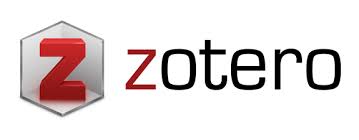Submission Preparation Checklist
As part of the submission process, authors are required to check off their submission's compliance with all of the following items, and submissions may be returned to authors that do not adhere to these guidelines.- The submission has not been previously published, nor is it before another journal for consideration (or an explanation has been provided in Comments to the Editor).
- The submission file is in OpenOffice, Microsoft Word, or RTF document file format.
- Where available, URLs for the references have been provided.
- The text is single-spaced; uses a 12-point font; employs italics, rather than underlining (except with URL addresses); and all illustrations, figures, and tables are placed within the text at the appropriate points, rather than at the end.
- The text adheres to the stylistic and bibliographic requirements outlined in the Author Guidelines.
Author Guidelines
- Articles are directly submitted to the THORIQOTUNA : Jurnal Pendidikan Islam by registering on behalf of the article author's account.
- Manuscripts can be the results of research or conceptual articles in the field of law, sharia and social affairs.
- The manuscript can be written in Indonesian or English as long as 17-25 pages.
- Quotations that refer to Arabic (Al-Quran, Hadith, etc.) use Arabic script with Traditional Arabic font.
- The title of the Indonesian text is a maximum of 15 words, whereas in English it is a maximum of 12 words
- The manuscript is typed on A4 paper with top and left margins 4 cm, bottom and right margins 3 cm, using the font Calibri Light (Headings), font size 12, spacing 1.15, without after and before space between sentences and between paragraphs .
- Authors must cite the journal to be the reference for at least 50% of all citations in the manuscript.
- When referring to a chapter, the first letter of the word "chapter" is written in capital letters.
- When referring to a verse, the first letter of the word “verse” is written in lower case and the verse number is enclosed in parentheses.
- If in a direct quote a phrase, paragraph, or article formulation has a part that is omitted, please indicate the omitted part with an ellipsis enclosed in square brackets “[…]”.
- Abbreviations of names of laws and regulations are left to the style of each author, as long as they are used consistently. The suggested form, for example, is “Law no. 1 Year 1950 ”.
- If the author or editor of the source referred to is more than 1 (one) person, include the name of the first person followed by “et al.”.
- It is recommended that the authors avoid enumerative elaboration methods.
- Academic degrees are not listed in the bibliography or footnotes.
- Abbreviations of names of laws and regulations are left to the style of each author, as long as they are used consistently. The suggested form, for example, is “Law no. 1 Year 1950 ”.
- If the author or editor of the source referred to is more than 1 (one) person, include the name of the first person followed by “et al.”.
- It is recommended that the authors avoid enumerative elaboration methods.
- Academic degrees are not listed in the bibliography or footnotes.
Systematics Writing
[ARTICLE TITLE]
Written capital, maximum 15 words, Calibri Light (Headings) font 12 pt, Bold, and in the middle of the page / justify. The title should be short and reflect the important concept of the article.
Author Name 1, Author Name 2, Author Name 3, Author 4, etc.
(Writing the author's name does not include an academic degree)
Affiliates/Institutions author 1, Country (Calibri Light (Headings), 12)
Affiliates/Institutions author 2, Country (Calibri Light (Headings), 12)
Affiliates/Institutions author 3, Country (Calibri Light (Headings),12)
Affiliates/Institutions author 4, Country (Calibri Light (Headings),12)
Email : Author 1, Author 2, Author 3, Author 4
Abstract
These instructions are a new format as well as a manuscript/article template used in articles published in the Thoriqotuna : Jurnal Pendidikan Islam starting from publication in 2018. The article begins with the article title, author's name, affiliate address of the author, followed by an abstract written in Italic along 150-200 words. Especially for abstract, the text is written with 11 pt, justify, font and Calibri Light (Headings) typeface as well as spacing between rows of one space. If the article is in Bahasa Indonesia, the abstract should be written in Bahasa Indonesia and correct English. In case of English language articles, the abstract should be written in English only. Abstracts should be concise and contain: the core of the problems to be expressed, the objectives, the method of resolution, the scientific findings obtained, and the conclusion. The abstract for each language can only be written in one paragraph only with a single column format
Keywords: consists of 3-5 words or phrase, justify. It should consist of important consepts of the manuscript. Written alphabetically.
Absctract
This instruction is a new format as well as a manuscript/article template used in the article published in Thoriqotuna : Jurnal Pendidikan Islam starting publication in 2018. The article begins with the Article Title, Author Name, Author's Affiliate Address, followed by an italic abstract of 150-200 words. Specifically for Abstracts, text is written with 11 pt fonts, justify, and Calibri Light (Headings) typefaces as well as spacing between lines of one space. If the article is in Indonesian, then the abstract must be written in Indonesian and English which is good and correct. If the article is in English, then the abstract must be written in English only. Abstracts should be concise and contained: the core of the problem to be addressed, the purpose, the method of solving it, the scientific findings obtained, and the conclusion. Abstracts for each language should only be written in one paragraph with a single column format.
Keywords: consists of 3-5 words or phrases, justify, and should reflect important concepts of the article. Written alphabetically.
INTRODUCTION
The introduction is written in the font Calibri Light (Headings), justify, the first paragraph juts into 1.1 cm, writing sentences between paragraphs without additional spaces before and after (no before and after space). Preliminary writing should describe the actual problem that became the basic idea of article writing accompanied by adequate footnote references. In addition, it is necessary to talk about the novelism of this article compared to the previous article so that it can be seen the originality of the work. Authors are not allowed to provide subtitles in this introductory section.
METHODOLOGY
This section contains research designs, research objectives (population and sample or research subjects), data collection techniques, research procedures, and data analysis.
RESULTS OF RESEARCH AND DISCUSSION
The discussion is written using calibri light (headings) typeface size 12, justify, first paragraph juts into 1.1 cm, sentence writing between paragraphs without additional spaces before and after (no before and after space). The discussion contains the author's legal analysis of the actual issues raised along with adequate references. In the discussion also needs to include the author's idea of the ideal concept of the problem raised. Authors are allowed to use sub-chapters in writing discussions to make it easier for readers to understand important article ideas.
Subbabs are written using calibri light (headings) size 12, bold, using Arabic numbering. If there are still sub chapters in the one subbab then the lowercase letters of the alphabet are used in the title. The author is requested to avoid subbab levels in subbabs that are more than two levels.
If the author uses a table in his or her writing, the table is written in sequential numbers.
upporting instruments such as tables and images must also be accompanied by analysis or explanation of the instrument and its relevance to the author's writing.
CONCLUSION
Summing is written using calibri light (headings) size 12, justify, first paragraph jutting into 1.1 cm, sentence writing between paragraphs with no extra spaces before and after space. The cover contains the author's conclusions on the actual issues raised.
BIBLIOGRAPHY AND CITATION WRITING FORMATS
• Writing quotes using footnote models. Thoriqotuna : Jurnal Pendidikan Islam footnotes use a modified chicago manual of style 17th edition (full note) style model. Authors can download the following quotation apps: http://.mendeley.com or https://www.zotero.org/
• The writing of the bibliography is according to the type of reference. The author name in the library list is reversed in the name of the first author while the citation writing is not reversed.
A. Books
‹author name›, ‹year published›, ‹title›, ‹publisher›, ‹place of publication›.
Examples of Writing Formats and Layouts:
Mubarok, Jaih. 2000. History and Development of Islamic Law. Bandung : PT. Teen Rosada Karya
B. Journal Articles
‹author name›, "‹title›", ‹journal name›, ‹volume›, ‹number›, ‹month›, ‹year›.
Examples of Writing Formats and Layouts:
Khosyiáh, Shia. (2015). As a result of The Law of Un recorded Marriage against Wife and Ana katas Rights of Nature according to Islamic Law in Indonesia, Jurnal Asy-Shari'ah Vol. 17 (3), 185-200.
C. Research Results/Final Task
‹author name›, ‹year published›, ‹title›, ‹publication type (research results/ thesis/dissertation)›, ‹institution›, ‹institution place›.
Examples of Writing Formats and Layouts:
Mertokusumo, Sudikno, 1971, The History of The Judiciary and Its Legislation in Indonesia Since 1942 and What its Benefits for Indonesia, Dissertation, Doctoral Program of Faculty of Law Gadjah Mada University, Yogyakarta.
D. Papers/Speeches
‹author name›, "‹title›", ‹publication type›, ‹forum›, ‹place›, ‹time›.
Examples of Writing Formats and Layouts:
Hardjasoemantri, Koesnadi, "Legal Aspects of Community Participation in Environmental Management", Speech, Inauguration of Professor at Faculty of Law Gadjah Mada University, Yogyakarta, April 15, 1985.
E. Magazine or Newspaper Articles
‹author name›, "‹article title›", ‹magazine/newspaper name›, ‹date the article was published›.
Examples of Writing Formats and Layouts:
Falaakh, Mohammad Fajrul, "Unconstitutional Yogya Monarchy?", Kompas, December 1, 2010.
F. Internet
‹author name›, "‹article title›", ‹full url address›, accessed ‹access date›.
Examples of Writing Formats and Layouts:
Indonesian Child Protection Commission, "52 State Commissions, KPAI Determined Natural Selection", http://www.kpai.go.id/publikasi-mainmenu-33/29-52-komisi-negara-kpai-ditentukan-seleksi-alam-.html, accessed January 15, 2011.
G. Interview
Nuruzzaman, Komar (santri), interview by Busro. Cirebon Buntet Boarding School. Dated 14 November 2015
H. Laws and Regulations
The nomenclature of the legislation along with the number, year, and title, followed by the number and year of the place of invitation.
Examples of Writing Formats and Layouts:
Law No. 5/1999 on Prohibition of Monopoly Practices and Unhealthy Business Competition (Statute Book No. 33/1999, Additional Statute Book No. 3817).
Regulation of the Minister of Finance No. 129/PMK.08/2011 on The Use of Projects as the Basis for Issuance of Islamic State Securities (State News of the Republic of Indonesia Year 2011 No. 502).
I. Court Ruling
Nomenclature of court forum products, product numbers, subject matter, legal start date.
Examples of Writing Formats and Layouts:
Supreme Court Ruling No. 55PK/Pid/1996 concerning Review of Dr. Muchtar Pakpahan's case, S.H., M.A., October 25, 1996.
The Decision of the Constitutional Court No. 004/PUU-I/2003 concerning the Testing of the Law of the Republic of Indonesia No. 14 of 1985 concerning the Supreme Court of the Constitution of the Republic of Indonesia year 1945, December 30, 2003.
Copyright Notice
Authors retain copyright and grant the journal right of first publication with the work simultaneously licensed under a Creative Commons Attribution 4.0 International License that allows others to share the work with an acknowledgement of the work's authorship and initial publication in this journal.
Privacy Statement
The names and email addresses entered in this journal site will be used exclusively for the stated purposes of this journal and will not be made available for any other purpose or to any other party.

.png)


1.png)









